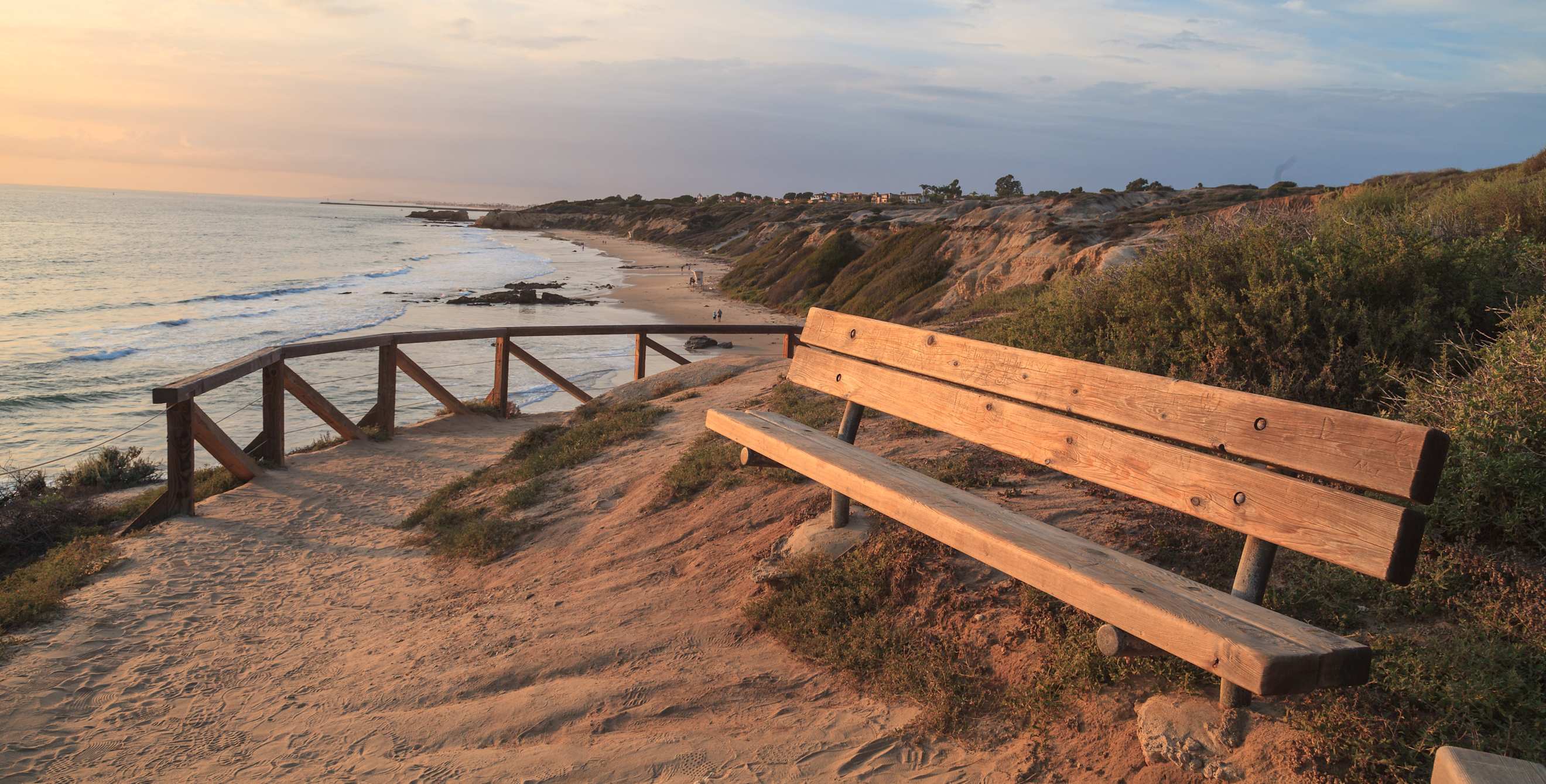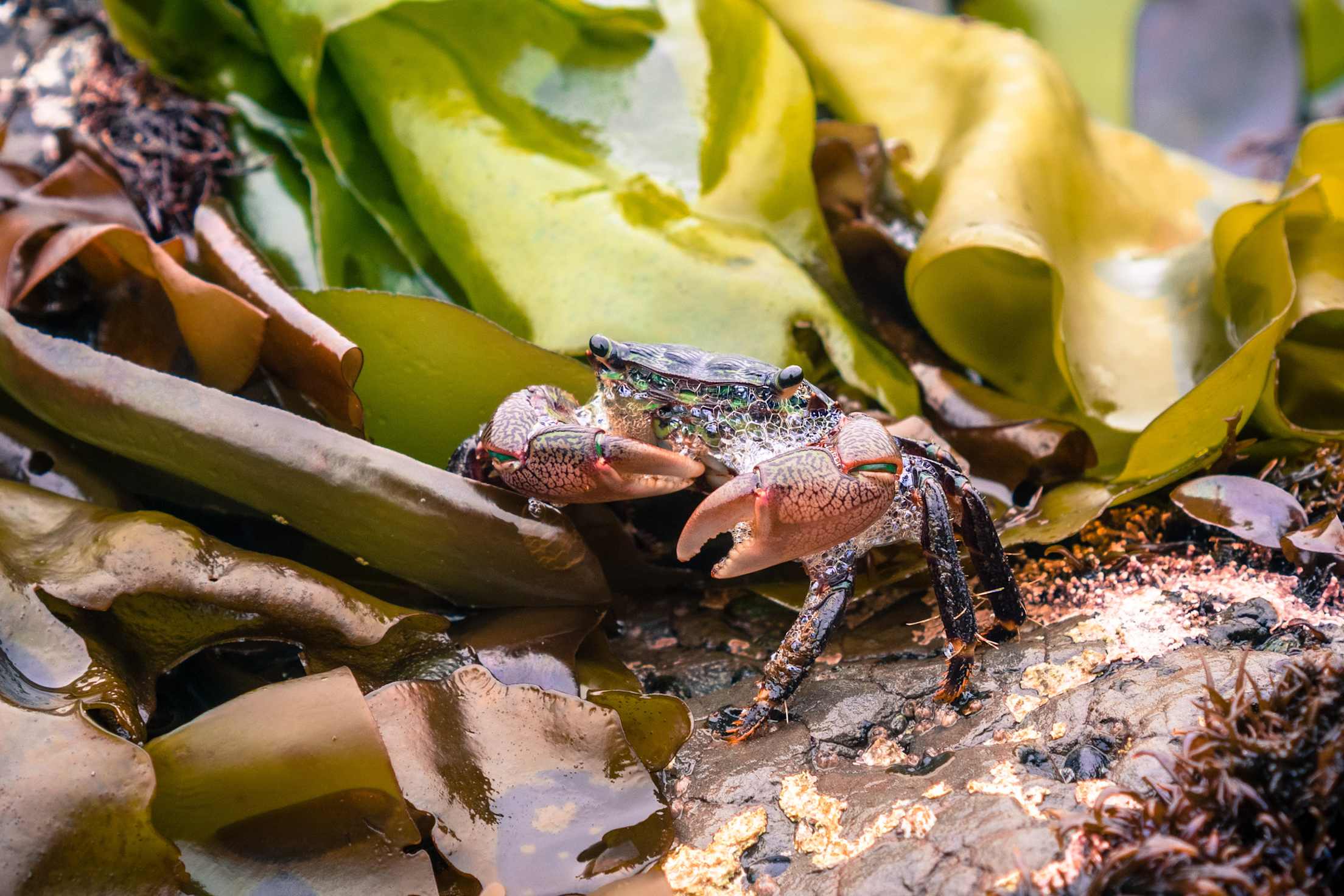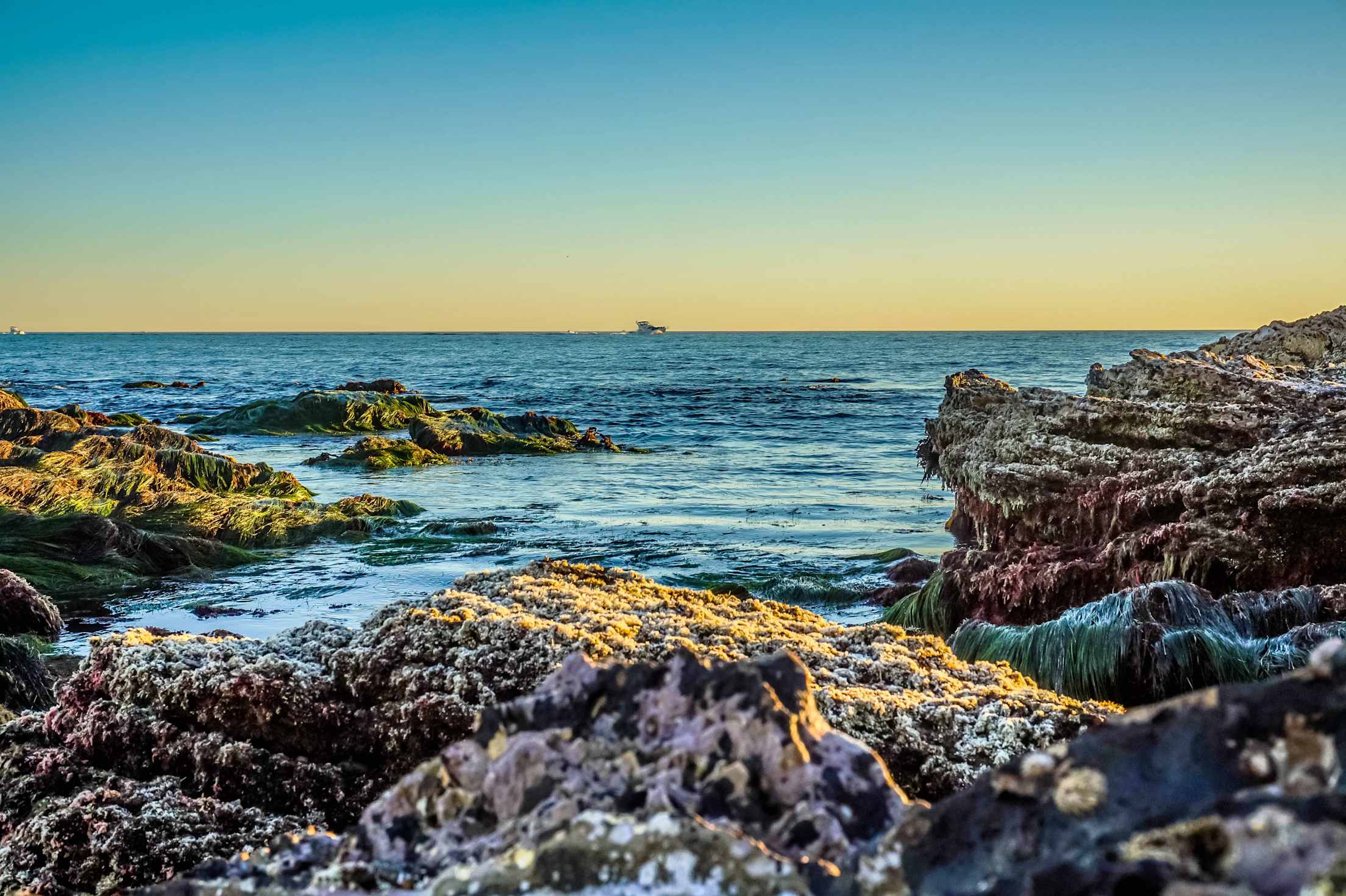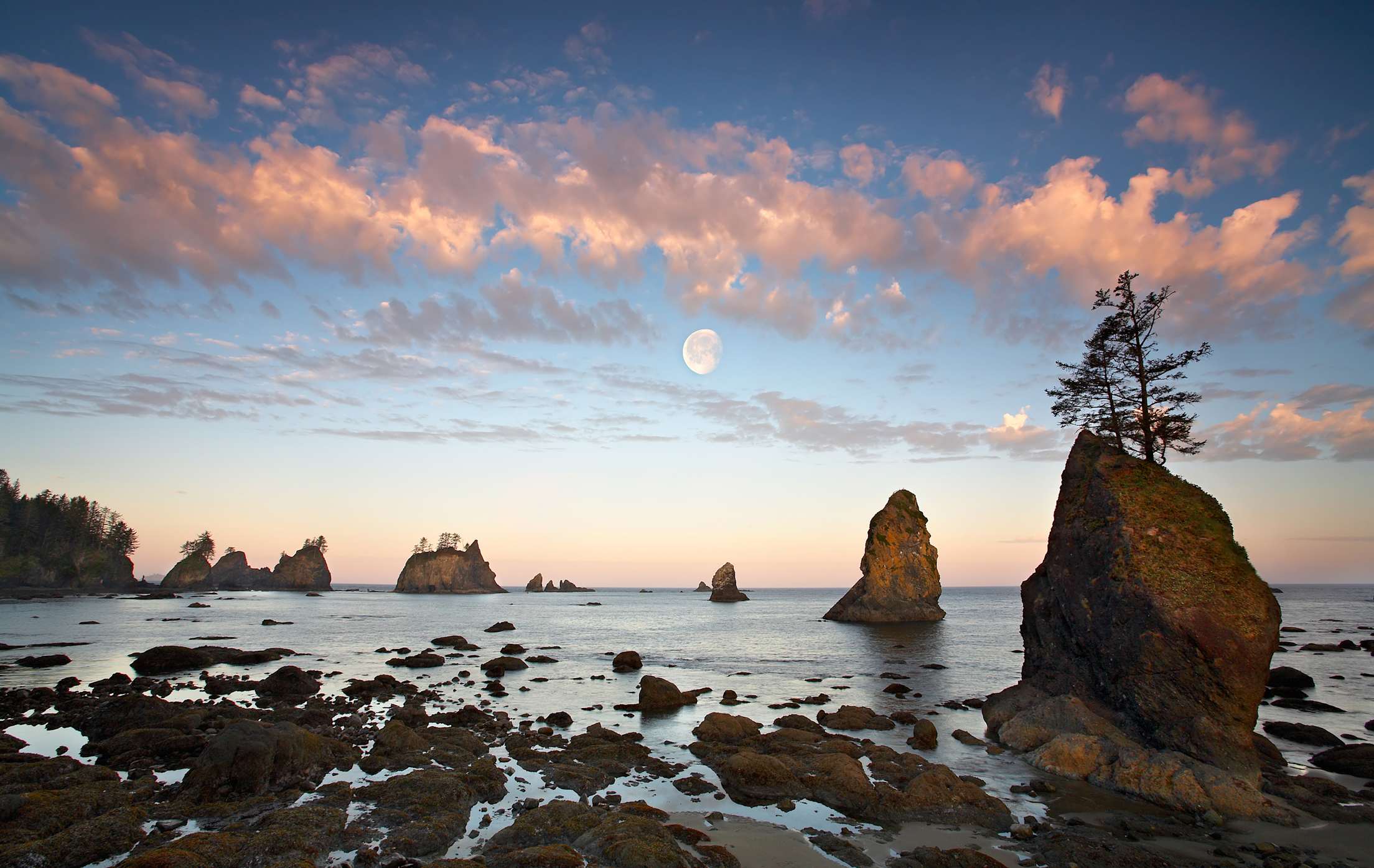
Best Tide Pools Around the West
The Pacific Coast teems with tide pools and little critters waiting to be discovered.

Tide pools bring some of the ocean’s smallest creatures up close. The pools form at low tide when retreating waters along craggy coasts leave behind glorified puddles that are teeming with life: scuttling hermit crabs, ochre sea stars, and purple sea urchins to name just a few.
While many critters living here can withstand frigid water, baking sun, and churning surf, they’re as defenseless against stomping, prodding humans as they are against the larger insult of oil spills and other pollution. Each of the pools is a sensitive, fragile ecosystem, and by sticking our human hands and feet in there, we can throw everything out of whack. So when exploring these areas, proceed with caution and feel free to look, but do not touch.
Here are eight of the best tide pool destinations in the West.

A small crab at the Fitzgerald Marine Reserve in Moss Beach, California.
James V. Fitzgerald Marine Reserve, Moss Beach, California
At low tide, this mile-long sliver of beach 30 minutes south of San Francisco offers perfect conditions for tide pooling: Lots of 1- and 2-foot-deep pools, each tucked neatly into seaweed-covered rocks that are relatively close to the parking lot. Creatures in these pools range from purple sea urchins to long greenish-brown sea cucumbers. You’ll also find entire rocks covered with mussels. On particularly busy weekends, the county dispatches park rangers to answer questions, identify invertebrates in the wild, and chat with visitors.
William Randolph Hearst Memorial Beach, San Simeon, California
Ruddy hermit crabs scuttle past anemone-covered rocks, bright-orange bat stars, and bumpy purple sea stars at William Randolph Hearst Memorial Beach. Translucent shrimp the size of a baby’s eyelash perform an aqua ballet while strands of sea grass undulate in the current. In their quiet way, these pools are just as stunning as the over-the-top castle William Randolph Hearst built on a hilltop across the highway. You’ll find the pools to the left of the pier, beginning about a quarter mile down the beach. The Coastal Discovery Center, run by the Monterey Bay National Marine Sanctuary, loans binoculars and fanny packs containing tide-pooling guides. Five miles to the north, a coastside platform affords great views of gargantuan elephant seals, which can weigh up to 5,000 pounds.—Christopher Hall

Crystal Cove State Park in Laguna Beach, California.
Crystal Cove State Park, Laguna Beach, California
Crystal Cove State Park has four great tide pool locations: Reef Point, Rocky Bight, Pelican Point, and Treasure Cove. The sites are all within a short walk of each other, and each is worth a visit. Hermit crabs and sea anemones abound, though if you’re lucky you might also spot kelp snails or tiny fish named sculpins. While it’s tempting to keep your head down to see the sights, make sure to scan the horizon every now and again, as well. The water quickly deepens beyond the edge of the rocks, and it’s not uncommon to spy dolphins and otters frolicking just offshore. Entry to the park is $15 per car.
Seal Rock State Park, Seal Rock, Oregon
This Instagram-worthy beach south of Newport gets its name from the rock formations that explode from the ocean just beyond the shore—seals like to lounge on the rocks by the dozens and it’s not uncommon to stroll the tide pools amid a cacophony of barks. The pools themselves explode with color: chartreuse sea anemones, purple sea stars, chitons with fire-red backs, and more. Even the seaweed here seems emerald green. The palette is even more spectacular at sunset, when orange and pink clouds above add to the kaleidoscope effect.
Cape Perpetua Scenic Area, Yachats, Oregon
James Cook, the English sea captain, long ago renamed this spot Cape Perpetua, where mountains plunge into the sea and dazzling pools dot a shelf of black rock above the surging surf. Today’s visitors arrive by car at a U.S. Forest Service interpretive center where you can rent a walking stick or attend a ranger program. From the center, a half-mile trail leads to pools that hold white and pink worms, purple urchins, and giant green anemones as big as saucers.—CH

Shi Shi Beach in Neah Bay, Washington at sunrise.
Shi Shi Beach, Neah Bay, Washington
Beachcombers regard this 2-mile crescent of shoreline near the northwesternmost point of the contiguous United States as one of the finest tide pooling beaches in North America. Mussels are the most common inhabitants at Shi Shi Beach, though razor clams, limpets, chitons, hermit crabs, and sea cucumbers live in pools at low tide here, too. Perhaps the only downside to Shi Shi is its remoteness: The quickest way to get there is a 3-mile trail-and-boardwalk hike from a parking lot off Hobuck Road on the Makah Indian Reservation. Be sure to get a $20 Makah Recreation Pass at the reservation museum before you park.
Beach 4, Olympic National Park, Kalaloch, Washington
The rock basins here are on lands occupied for millennia by the Quinault Indians, whose reservation now lies to the southwest. “From tide pools we once ate anemones, limpets, large barnacles, and seaweed,” says Leilani Chubby, curator of the Quinault Tribal Museum. “Mussel shells were used for cutting and for making leggings worn during dances. We still collect mussels on the reservation and bake them in a pit.” Visit on your own or join tide-pool walks organized by the Kalaloch Ranger Station.—CH
Hulopoe Bay, Lanai, Hawaii
The best thing about the tide pools at Hulopoe Bay is their accessibility—the pools are a short stroll from the Four Seasons Resort Lanai, and just down the bluffs from the open-to-the-public Hulopoe Beach Park. There’s even a set of concrete stairs from the main dirt trail down to the pools themselves. On most days, the critter cast of characters comprises crabs, sea stars, limpets, and fish. The tide pools also are a short walk from Sweetheart Rock, an 80-foot-tall rock formation from which, legend says, a warrior jumped to his death after learning his wife died.